Brenda Vernor, the keeper of Enzo Ferrari's secrets. By Autosprint.
A very special interview with the personal secretary of the Drake in the roaring 70s and 80s. Brenda Vernor, a Lady and also a Legend, indeed, is a Lady Legend. Union of roles, sensibilities and cases of life.
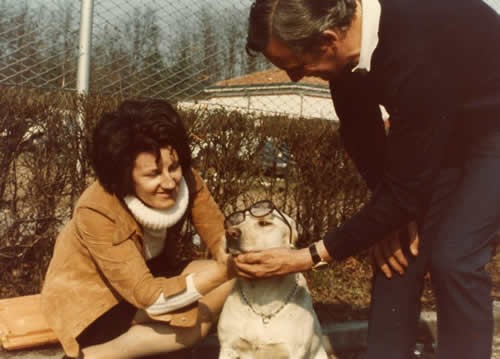
Brenda, Fred and Mike in 1973.
British of origin and aplomb but now also very Italian, proud citizen of Maranello, private secretary of Enzo Ferrari, woman of the great Mike Parkes, the engineer driver second at the 1966 Italian GP with the Red to escort Scarfiotti, as well as ideal and adoptive mother for most of the drivers who landed in Maranello from the late '70s and throughout the' 80s. By now, she is the guardian of memory, a discreet and precious witness full of style and humour, all permeated by strong, warm, important values. No arsenic and old lace but only passion, the cult of human relationships, the pleasure of sharing moments of life with characters who have made the history of racing and of her own life. And a lot of heart.
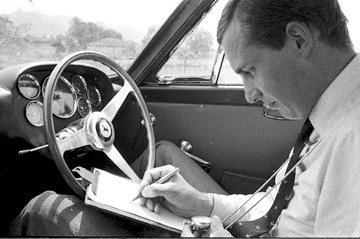
This rather studious-looking British gent is Michael Parkes, a Ferrari development engineer and member of the Scuderia Ferrari as a driver, here making notes in a right-hand drive Ferrari 330LMB. This image was taken on June 9, 1963 at the Modena Sud exit from the Milano-Bologna Autostrada. In the 1960s Ferrari conducted their high speed tests along this road as it was the only local venue where speeds attained on the Mulsanne Straight at Le Mans could be duplicated. Parkes is making his notes in preparation for the car going to Le Mans a few days later where it would finish fifth overall and third in the prototype class, driven by Jack Sears and Mike Salmon.
The heart that brought her closer to Mike Parkes, the heart that never stopped beating for Ferrari, the heart that kept her and keeps her away from her native England for decades, because Italy has always offered her so much and she has drawn it with both hands. Committing herself day and night, becoming a point of reference for the Ferrari of the Drake, taking everything seriously without ever taking herself too seriously. So this is not an interview but a morning spent in the living room of Brenda, experienced as a friend and a fascinating character. To chat, to hear her stories, to write down unique experiences and anecdotes which are valuable as treasures of life, because they are playful and at the same time revealing.
Brenda, I'm starting with the future. When the pandemic is over, what will be the first thing you want to go back to doing?
"Going back to Pebble Beach, California, to enjoy the competition of elegance for cars that in every edition sees the styles of wonderful cars confront each other. For many years I have been a regular presence and I absolutely want to resume this beautiful custom to find old friends, among these Derek Bell".
Which do you think is the most beautiful Ferrari of all?
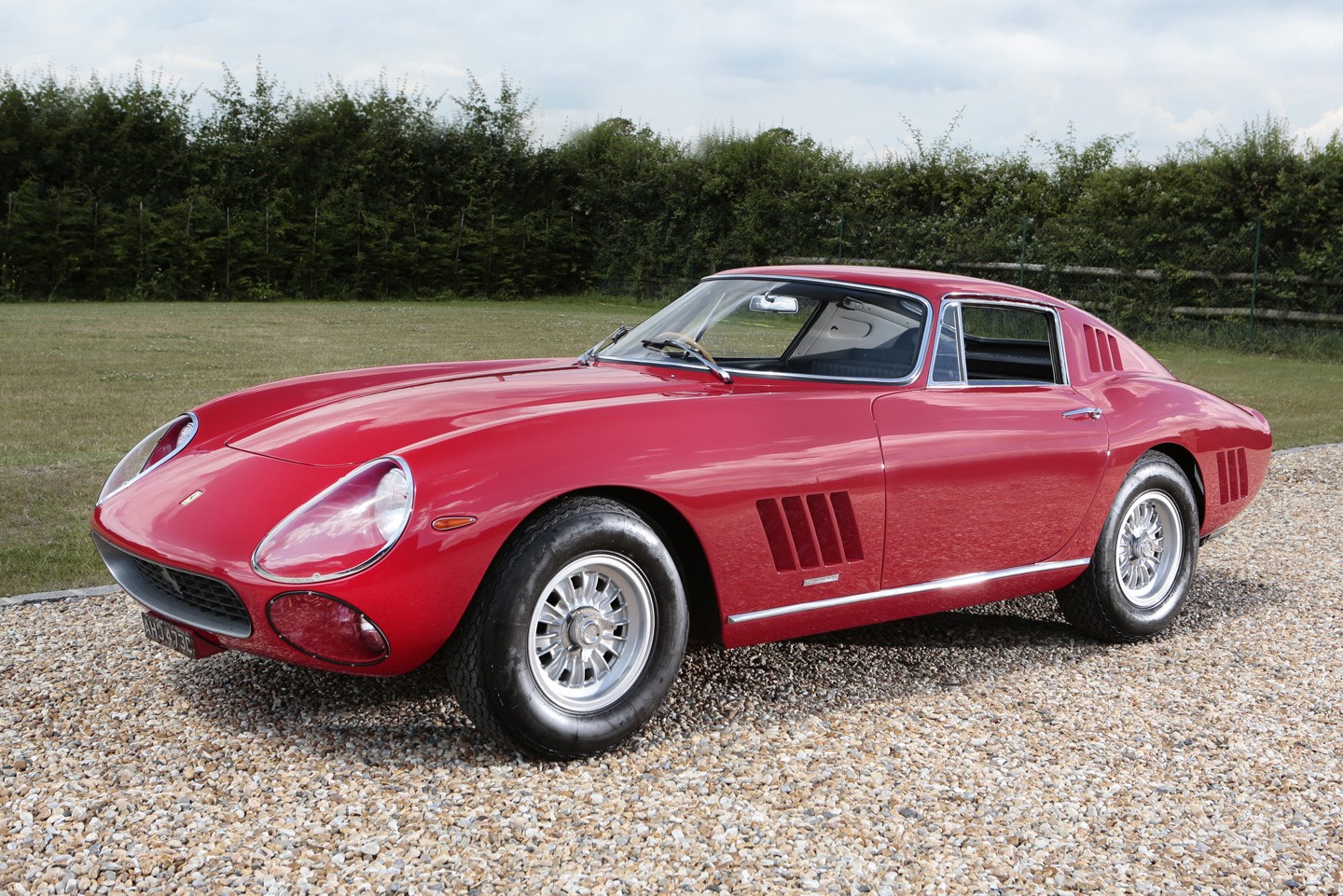
"The 275 Gtb4. Once my Mike Parkes had one and he came driving it, leaving me stunned, admired. You know, he was a superfine tester, a great test driver. A car like this he drove with his knees, while with his hands he took notes".
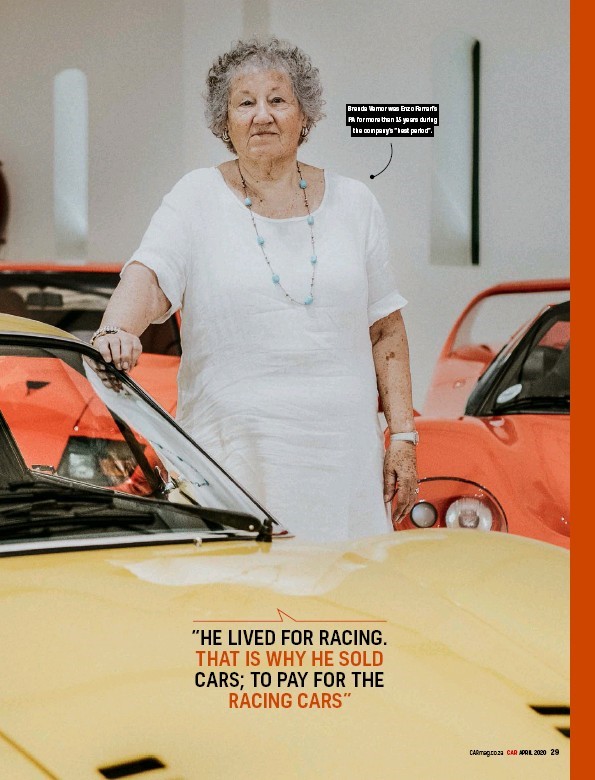
Ing. Enzo Ferrari’s longtime personal assistant, Brenda Vernor, is now 86 and still lives in Maranello. Thursday 14 November 2019. Brenda has spent most of her life closely associated with the Ferrari family, the Ferrari factory, Scuderia Ferrari and most of the drivers who have raced for Ferrari during the past 50+ years. No person alive knows Ferrari better than Brenda. Able to deal with the Old Man on a daily basis, Brenda is famously feisty and forthright -- as you can imagine she would be. Whatever you want to know about Ferrari from the inside, Brenda can tell you!
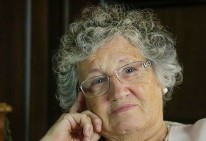
Brenda, the historic secretary of the Drake tells herself. By E.B., 18.04.2019. A real institution at Ferrari and, more generally, in the F1 “circus”. Brenda Vernor was Enzo Ferrari's faithful secretary and personal translator as well. From 1977 to 1993, the Drake and the Maranello company were able to count on her. A woman in a world of men, an English person in a world that was “made in Italy” at the time. Brenda, who speaks Italian with the classic Anglo-Saxon inflection, has therefore experienced many important periods of the Red epic. Right next to the “old man”, as she still defines Enzo Ferrari today. «The 'old man' always told me that I am like the monkey, that I must do like the monkey: I don't see, I don't hear and I don't speak. Joking aside, I want to emphasize that I found so many friends at the Smeraldo. In particular, I saw several of my boys, the drivers I met at the time of Ferrari». And on the subject, the adventures and stories of the drivers, Brenda has dedicated a book. In fact, the relationship is one of the true and genuine ones.
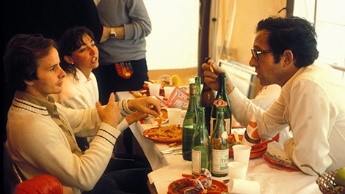
Gilles and Joann Villeneuve with Mauro Forghieri.
The examples are there for all to see, they are part of the gala evening organized in honor of Forghieri. Example number one: Jody Scheckter arrives in a Limousine and, as soon as he gets off the car, he goes straight to Brenda.
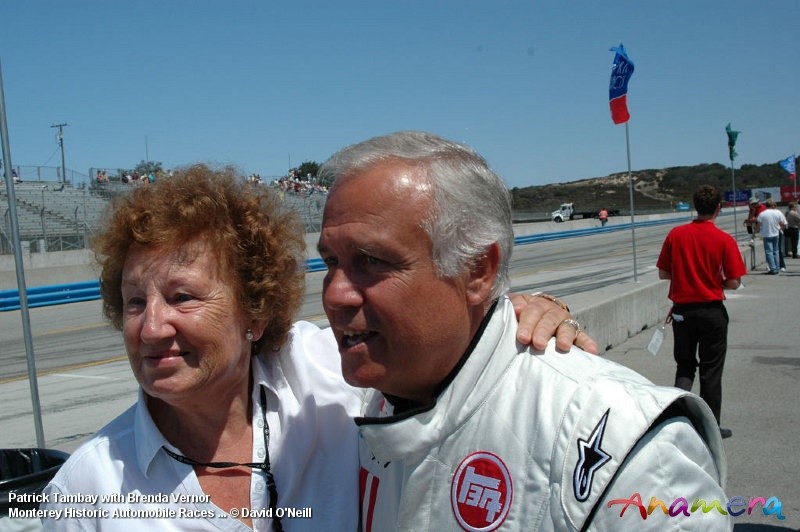
Brenda Vernor with Patrick Tambay.
Same procedures also for Patrick Tambay, while Arturo Merzario makes some jokes.

Arturo Merzario.
«Today I continue to follow Formula 1 even if I don't like it anymore as I used to. I prefer motorbikes, at least they don't make me fall asleep. However, I remember with pleasure the times gone by and the drivers I met. I don't have a favourite from the past, while among the modern ones the best is absolutely Kimi Raikkonen. I told Piero (Ferrari): "you sent the wrong driver away ...".
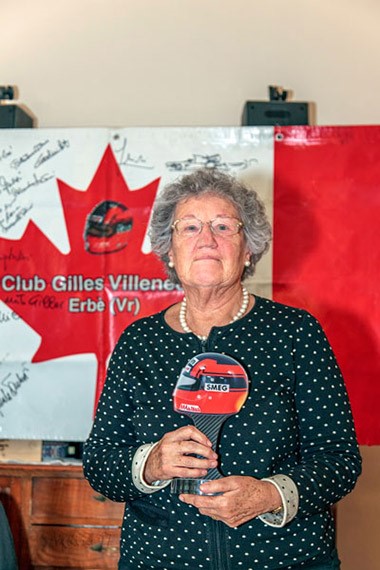
Brenda Vernor: life with Ferrari. By Gordon Cruickshank. Jun 22, 2017. Few got close to Enzo Ferrari, but as his English PA Brenda Vernor was closer than most at the Scuderia. In today's greatread, "Il Ingenere's" right-hand woman reveals what life as really like at Maranello.
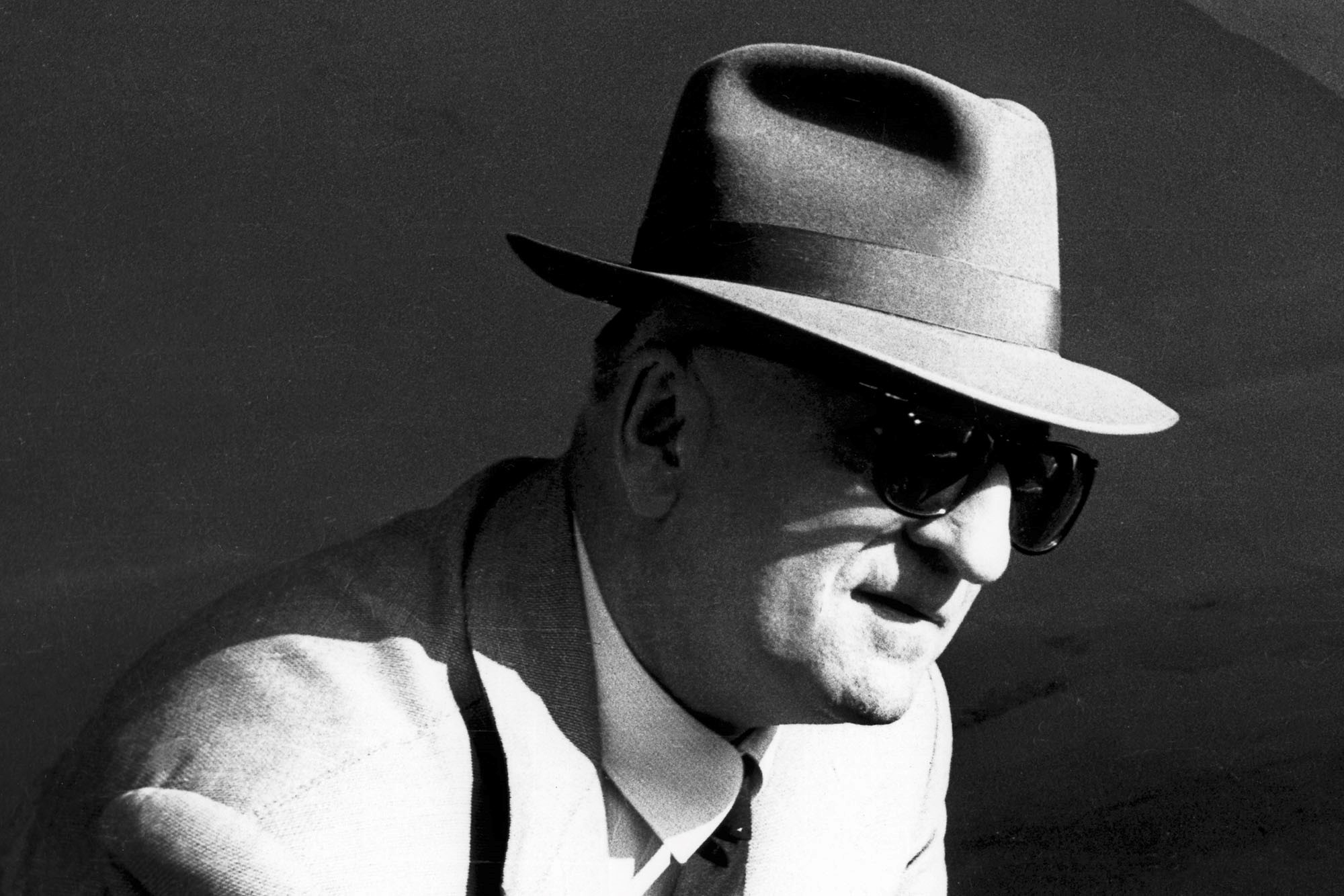
As Enzo Ferrari advanced in his years, so he played up own air of mystique. Bernard Cahier / Getty Images.
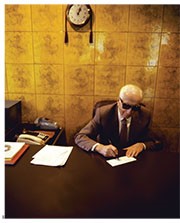
Drivers such as Bandini, Arnoux, Scheckter, Villeneuve, Tambay, Alboreto, Mansell – just people. Brenda Vernor is not being dismissive; she knew they were the greats of their era because they had received the highest honour – the invitation to drive for Ferrari. She knew all about it because often it was she who passed on that invitation, she who arranged their interview with Enzo Ferrari. She was Ferrari’s personal assistant and she saw the drivers every day.
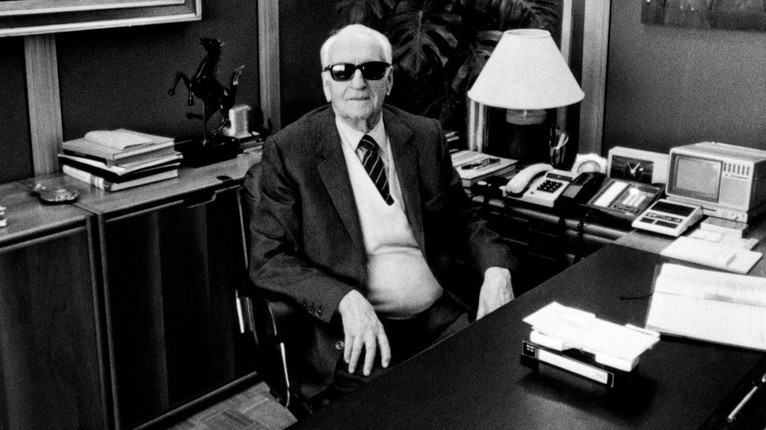
And the Old Man too. Every day, on hand to scoot into his private sanctum to take letters, translate correspondence, phone Bernie Ecclestone as Enzo’s linguistic go-between. It was a privileged post and it went not to a Modenese signorina, not even to an Italian, but to a girl from Croydon who in time would become the mother of the racing department.
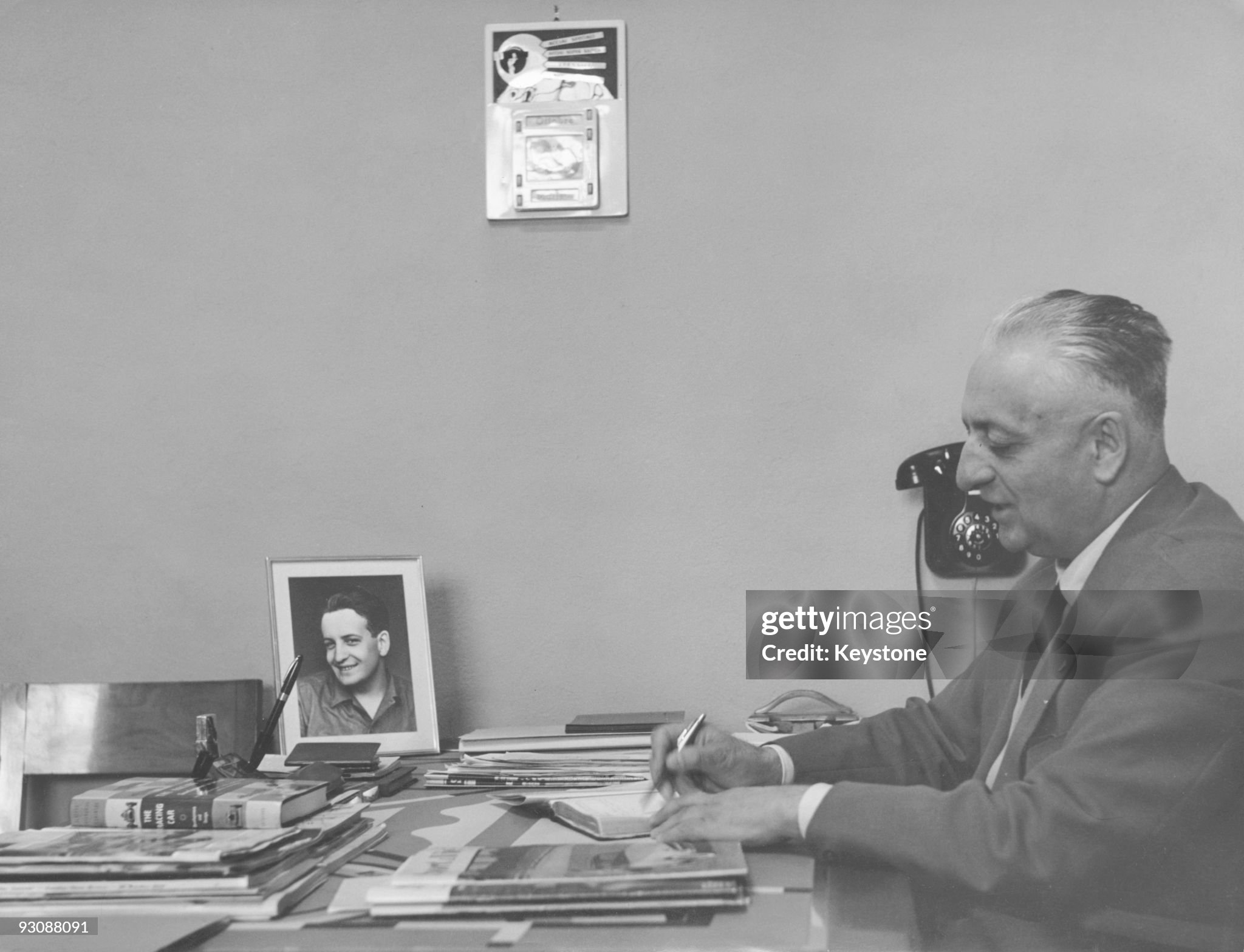
It’s been a while since she retired – after Enzo died in 1988 she continued as Piero Lardi Ferrari’s PA in the road car department – but Brenda is still close to many Ferrari figures, drivers and customers. We – an MS quorum of self, Simon Arron and proprietor Edward Atkin – meet over lunch in the sun-filled garden of one such marque enthusiast in North London as Brenda pauses on her way to the States and the questions flow.
Behind her dark glasses (shades of Enzo’s shades) Vernor, now in her early eighties, is precise, quick to reply, quick to dismiss when the subject is something – or someone – she dislikes. You can sense toughness, the steel that let her stand up to one of Italy’s grandest men. “Having three older brothers in a house of five men,” she says, “I had to learn to defend myself”.
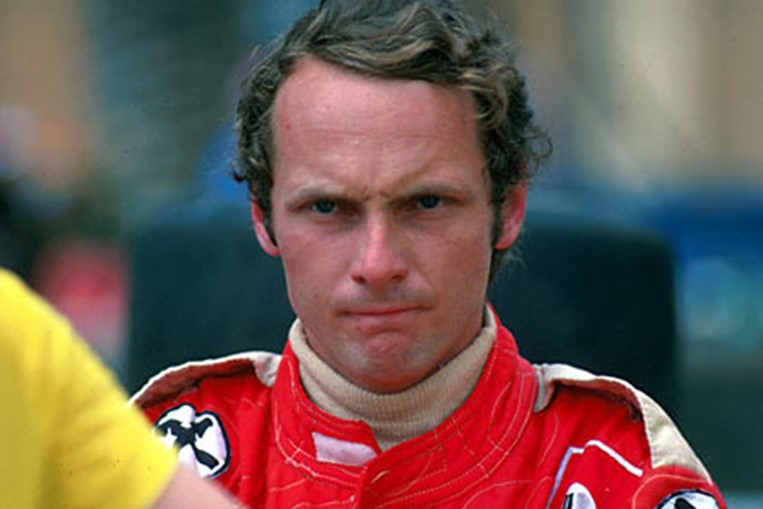
When Niki Lauda is mentioned, she says “I like Niki. He’s like me – says what he thinks and couldn’t care less.” In a culture built around one towering figure, a man whose employees were afraid to tell him bad news, perhaps that’s why Enzo noticed her.
Italy had already taken hold of her. Bored with 1960s life in Croydon – “I hated Croydon. Still do.” – she spent three months on a job exchange in Perugia, then 18 as an au pair in Bologna where she had to learn Italian as none of the family spoke English. By 1962 that landed her a teaching post in Modena, where a certain Michael Parkes wanted someone to deal with correspondence and a young lad named Piero Lardi Ferrari was one of her pupils.
Although by now Ferrari had splashed scarlet across the results books, it was a mere name to Brenda. She was hardly a motor sport fan. “I just thought why are those silly buggers going round and round?” But working for Parkes, the team’s development driver, drew her into the racing world and introduced her to the other Ferrari drivers and to Enzo himself. She must have made an impact, though it was not until the 1970s that the connection crystallised. “He said ‘one of these days I might employ you’. Then he rang and said ‘come and work for me’. After a three-month trial I was still there, doing his translations, the F1 telexes to FOCA and team heads.” She worked alongside two male secretaries, one handling Ferrari’s personal affairs, one administrative tasks, but her language skills put her closer to the real centre, looking after drivers and working with Franco Gozzi in the press office.
Some have suggested that Ferrari spoke English but concealed it; Brenda scotches this. “I never heard him speak English. But he did speak good French.”
How quickly did she grasp the significance of the heritage? “Quickly. Had to be quick with the Old Man, if you were dumb you were out. I was the only woman among 199 men in the racing department. I had a whale of a time. But I was respected because I did things for everybody, including the mechanics, taking them cakes and beer during an all-nighter. If they needed anything they knew where to come. And if they did something wrong I put them in their place.”
Did the Old Man criticise her? “Not criticise, but if you wrote something he had to change it, even if it was just a comma. Once I wrote a telex and he said ‘move that here and put that there and when you’ve changed it bring it to me at the Cavallino [restaurant]’ – he always had his lunch there. I took it, he chucked it in the air screaming. I said ‘I did exactly what you said’. He said ‘Humph. Send it’. That was all. He wouldn’t apologise, or say thank you. If we had a press conference, he would want the whole thing transcribed on Sunday; he would never personally thank me, but on Monday I’d find a present on my desk – a watch, for instance.”
Did he ever admit a mistake? “No. And you never argued with the Old Man.”
As Brenda was establishing a life in Modena Ferrari was recovering from a fallow couple of years following the Carlo Chiti-led walkout of 1961, with Surtees taking the 1964 world championship and charismatic team-mate Lorenzo Bandini fourth.
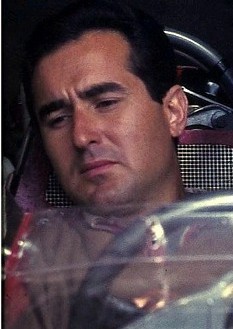
Lorenzo Bandini.
“Lorenzo was a lovely guy.” Brenda recalls, animated. “I lived in the same block of flats. He was a naughty boy. He used to bang on my door at 2am, asking me to help him cover his tracks – I’d be shaking blonde hairs from his sheets. He had a photo of his wife which he’d lay flat at such times, then when he picked it up he’d say, ‘you know I love you.’ I was in Monte Carlo when he died [following a crash in the 1967 GP] and said I’d never go back there.
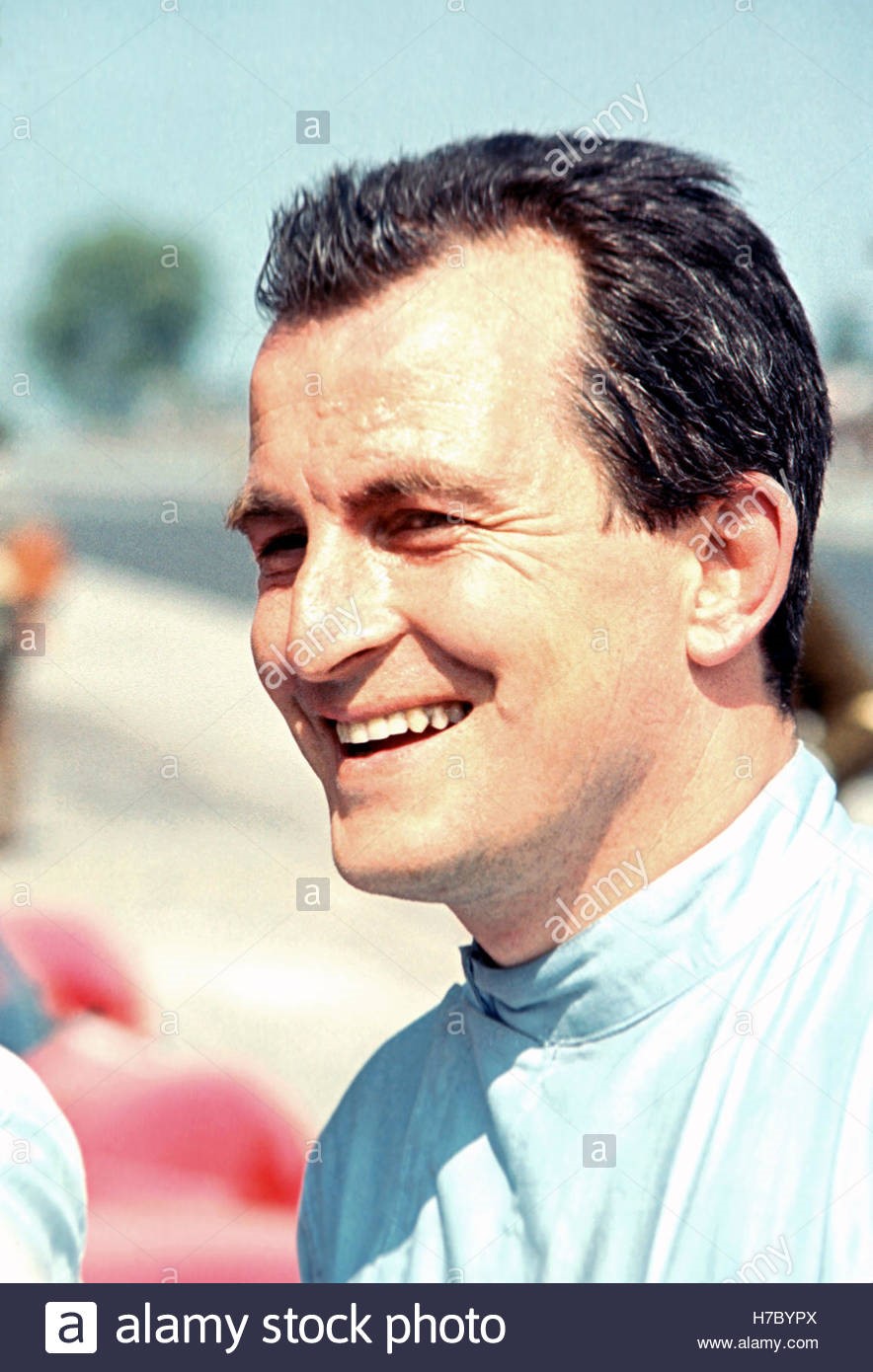
Lodovico Scarfiotti in 1966.
“And then there was ‘Lulu’ [Lodovico Scarfiotti]. God, the things they did. They sometimes used to lock me in my bedroom, but they were good times.”
Bandini’s was only one of many Grand Prix fatalities in this fragile time. How did the team handle those? “We just carried on as though it were a normal day. Whenever the team lost a race on Sunday, you’d walk in on Monday and there would be silence everywhere. There were no discussions and it was just the same when there was a fatality. You didn’t go and see Mr Ferrari; you just closed your door. When you lose somebody, there’s nothing you can do to bring them back, is there?”
If that sounds hard, it’s the realism of racing. All teams race on after these traumas, yet Vernor’s memories show close ties between her and most – not all – of the Scuderia’s drivers. “I did everything for them, packed their bags. You wouldn’t believe some of their luggage when they came back.”
Care to tell us? “No. I’ve written a book all about the drivers – My Boys. They’re getting worried. If I told everything they’d shoot me. Gerhard Berger said, ‘if you write everything about me I’ll have to take the boat out to sea. My wife will kill me!’ They were good times. We had fun, real fun.”
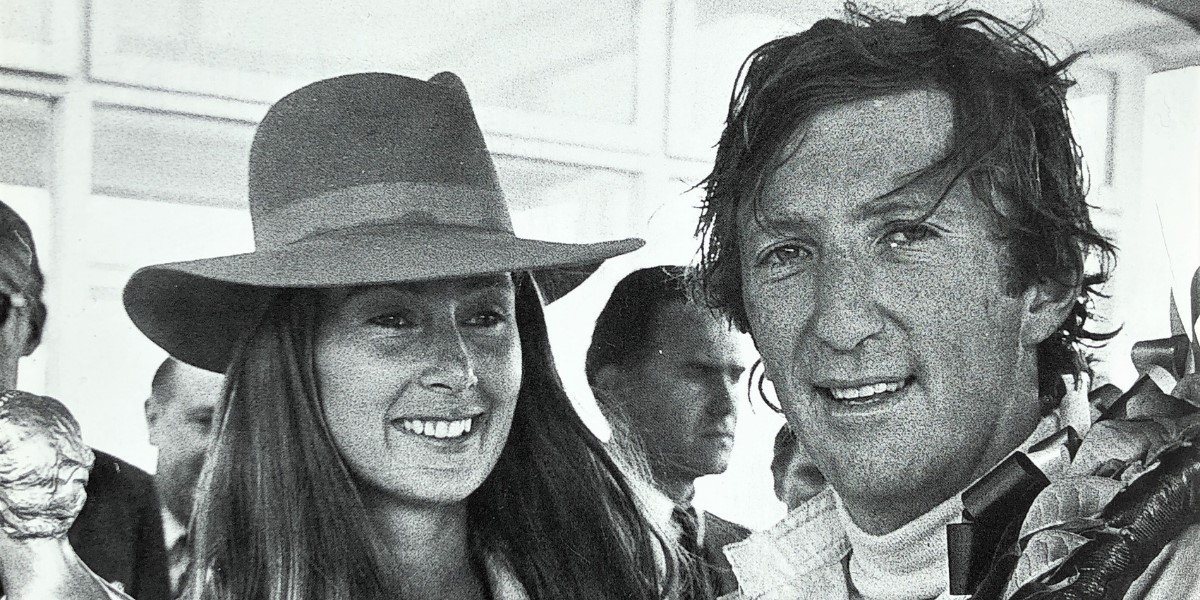
Jochen and Nina Rindt.
Some had extra appeal. “Jochen Rindt’s eyes – oh my God! The most beautiful eyes I’ve ever seen.
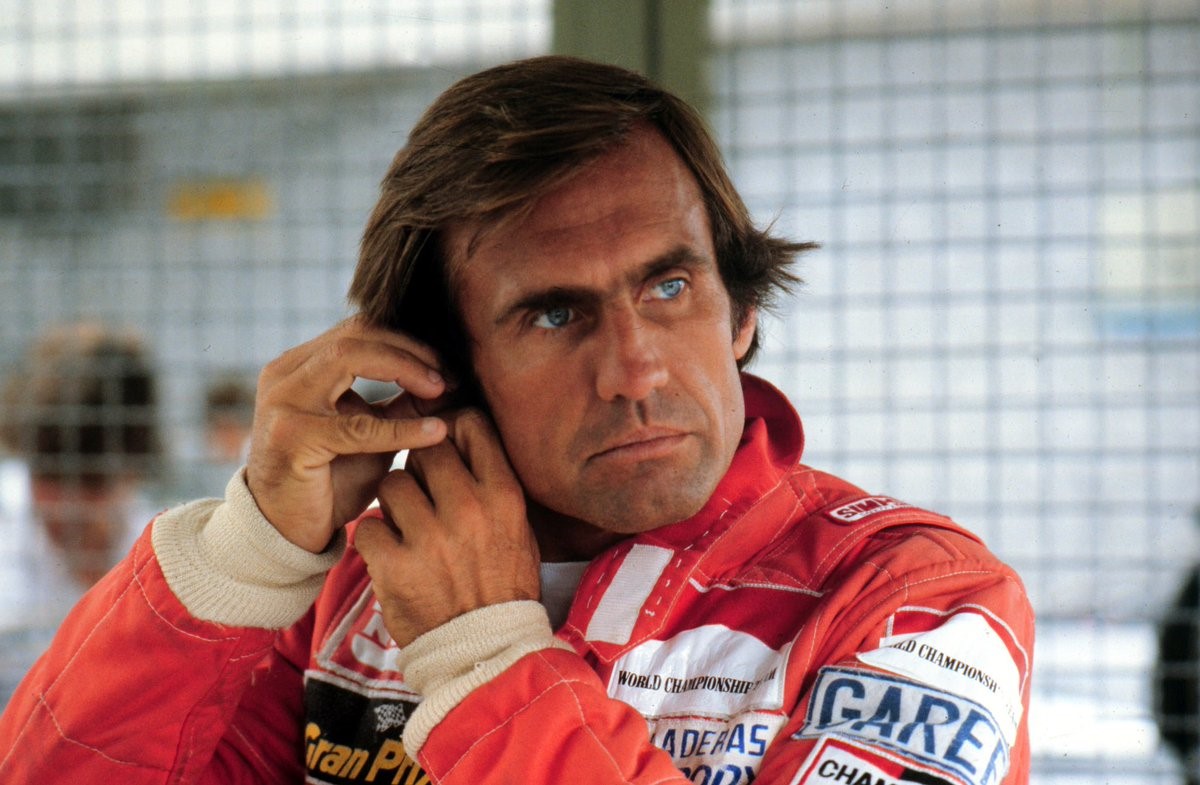
“And the first time I saw Carlos Reutemann I couldn’t talk. I’d never seen such a handsome guy. That manner of a gentleman, that tan...” - Brenda Vernor, Enzo Ferrari's former assistant.
And the first time I saw Carlos Reutemann I couldn’t talk. I’d never seen such a handsome guy.”
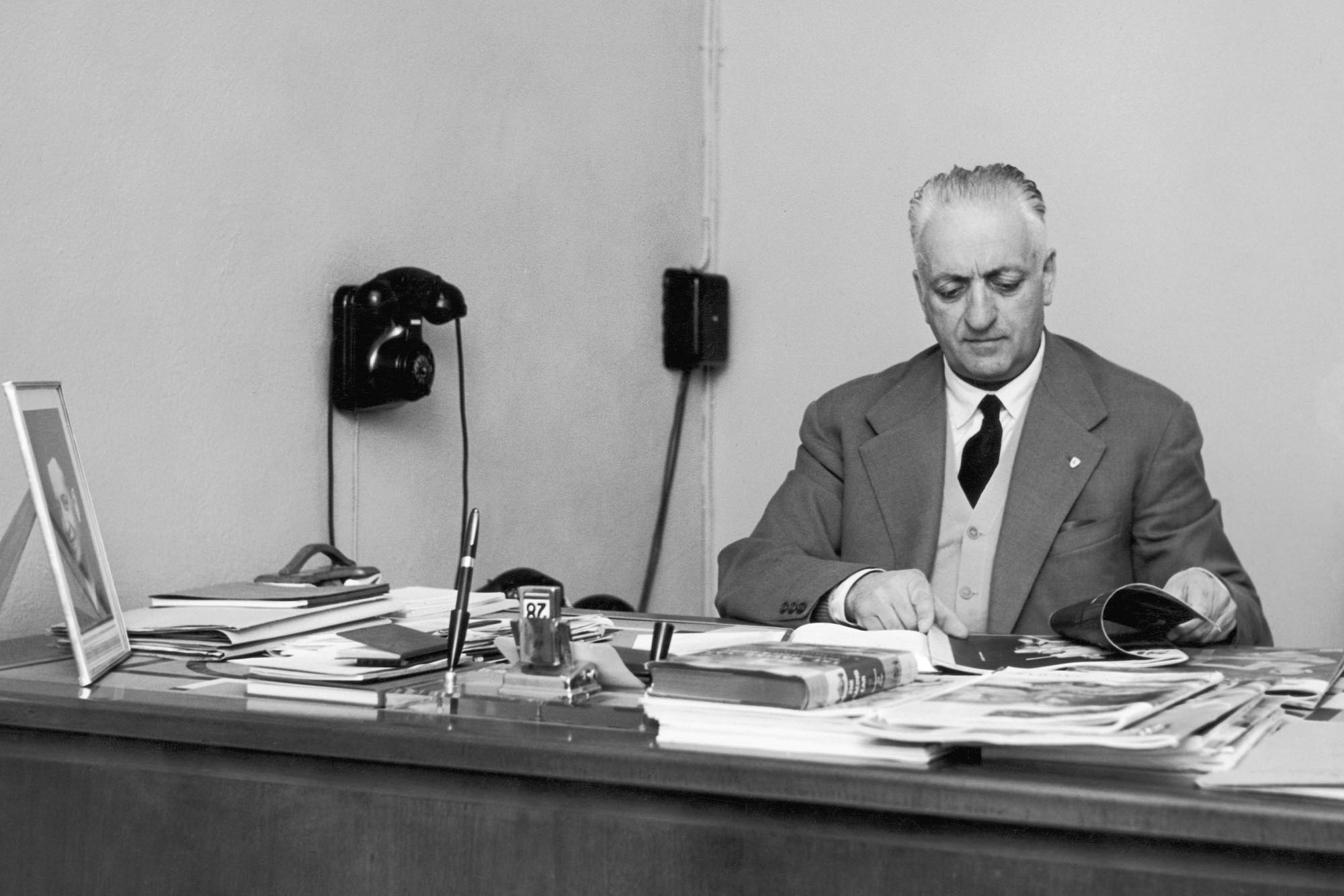
Enzo at work. Getty Images.
Then there’s Patrick Tambay, who rates her highest epithet – a gentleman. “Patrick was the only driver I cried for when he left. [Sporting director Marco] Piccinini and Piero came into my office and stuck up a huge poster of Alboreto. I said, ‘you can take that down immediately’.”
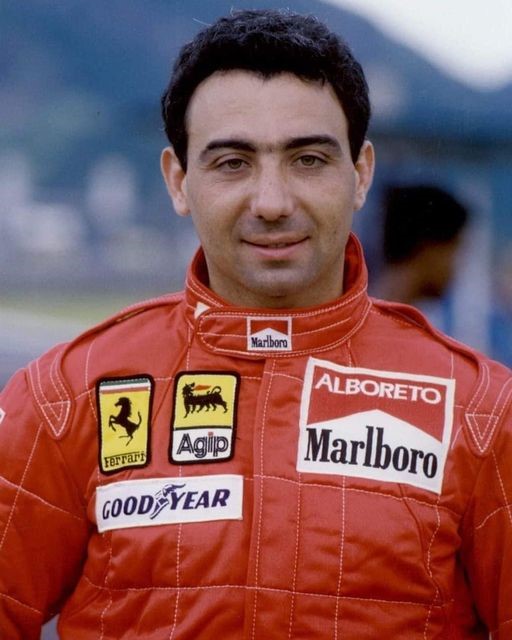
Michele Alboreto.
On the other hand – “I remember sewing a Ferrari patch on Andretti’s overalls and he didn’t even say thank you. I thought, ‘you miserable bugger’.” And Alain Prost? Crisp comment – then “don’t put that down”.
She is more forthright about Michael Schumacher, who in the 2000s brought such astounding success back to Maranello. “I’m very sorry about what has happened to him, but there was something I didn’t like. All the other drivers stayed in hotels, or found a flat, but he moved in to The Old Man’s house, had his dogs in there eating off the floor and wanted clean sheets every day. I wondered who the hell he thought he was – he was just a driver like any of the others.”
She won’t admit to having favourites, but some drivers figure larger in her stories, especially those she’s still in touch with – Arnoux, Scheckter, Tambay, Alesi. “They were all my boys. René Arnoux never grows up. He’s always the same, a heart of gold. I won’t have anything said against him. Unfortunately he’s very naïve and he gets into the wrong company who lead him astray…”
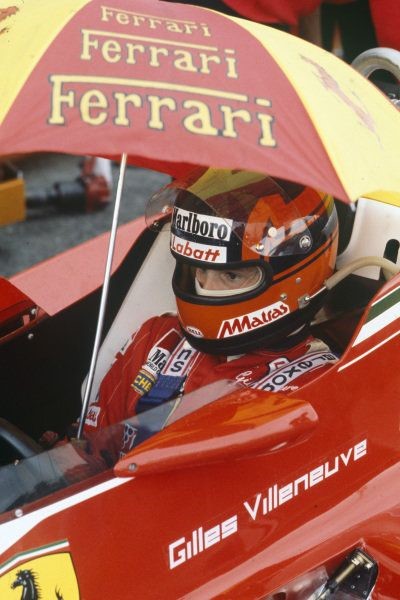
And then there was Gilles Villeneuve, who scared the hell out of her in his 328. “Oh my god! One evening Ingegnere Ferrari” – Vernor never called him anything but Ingeniere or Mr Ferrari – “invited us to dinner up in the mountains. Gilles said ‘you’d better come with me as I don’t know where it is.’ It was a narrow twisty road up in the mountains and he drove like a madman. I said ‘listen, if a car comes the other way we won’t be here tomorrow.’ ‘Oh, I’m enjoying myself!’ ‘I don’t care, stop this bloody car, I’m getting out’.”
On another occasion Gilles burst into the works, exclaiming, “Bloody car, the brakes don’t work.” “I sent the car to the experimental department,” says Brenda. “Half an hour later they rang and said it was ready. ‘What was the matter?’ ‘Would you ask Mr Villeneuve to put coins in his pocket and not under the brake?”
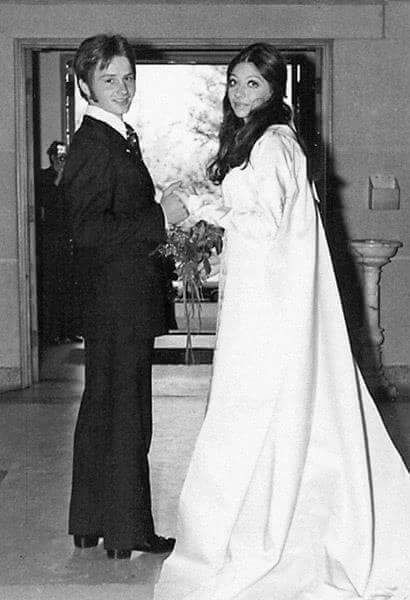
Gilles & Joanna tie the knot.
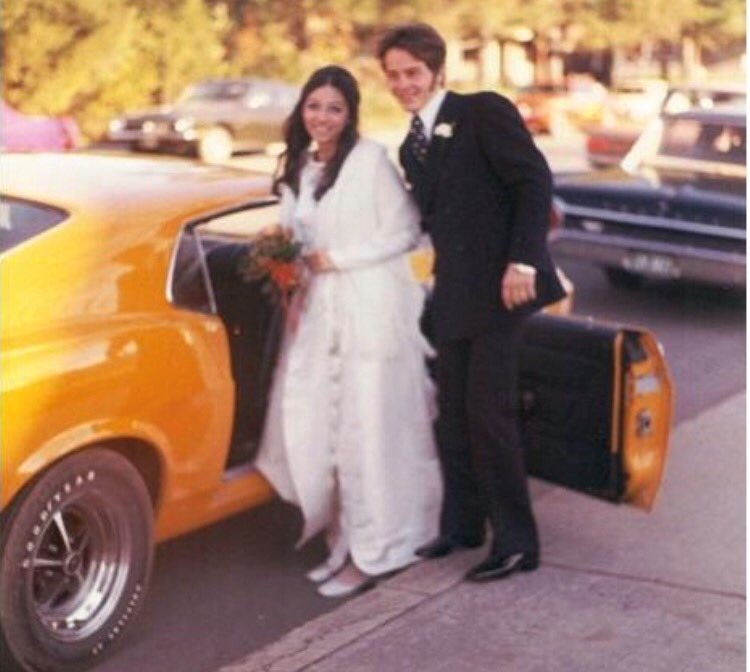
About to get in his Mustang wedding car with bride Joann. Class!
Brenda has many mementos in her Modena flat – she has no interest in returning to the UK – but one is extra-special. “I phoned Gilles in Monte Carlo because I needed some certificate. So he sent me the document and instead of putting ‘Brenda Vernor, care of Ferrari’ he put ‘Ferrari, care of Brenda Vernor’. I still have it.”
She may not yet have been officially on the strength, but Vernor was on the scene as the Scuderia went through the Surtees schism, when during the one sports car race that really mattered to Enzo Il Grande John’s frustrations with team manager Eugenio Dragoni boiled over. “I was at Le Mans in 1966 when it all happened. Dragoni and John had an argument, Dragoni phoned The Old Man and John walked out. They put Mike [Parkes] in John’s place so then he had it in for Mike. Mike was just doing what he’d been told but John refused to talk to him. I stayed with John a few years ago and he was still saying, ‘your Mike this, your Mike that.’ He wouldn’t speak to Mike.”
Brenda, on the other hand, had a soft spot for Parkes, despite another scary trip. “A charmer – couldn’t tell you all the girls he had. I remember driving back from Brands Hatch in an Imp and it was foggy in France but he wouldn’t stop. There was a guy keeping up with him which annoyed him, so he switched off his lights and kept going at full speed in thick fog. I wanted to stop at a hotel but he said ‘no, let’s go on.’ That was after he’d been racing all day. We got in at 3am. That was Mike…”
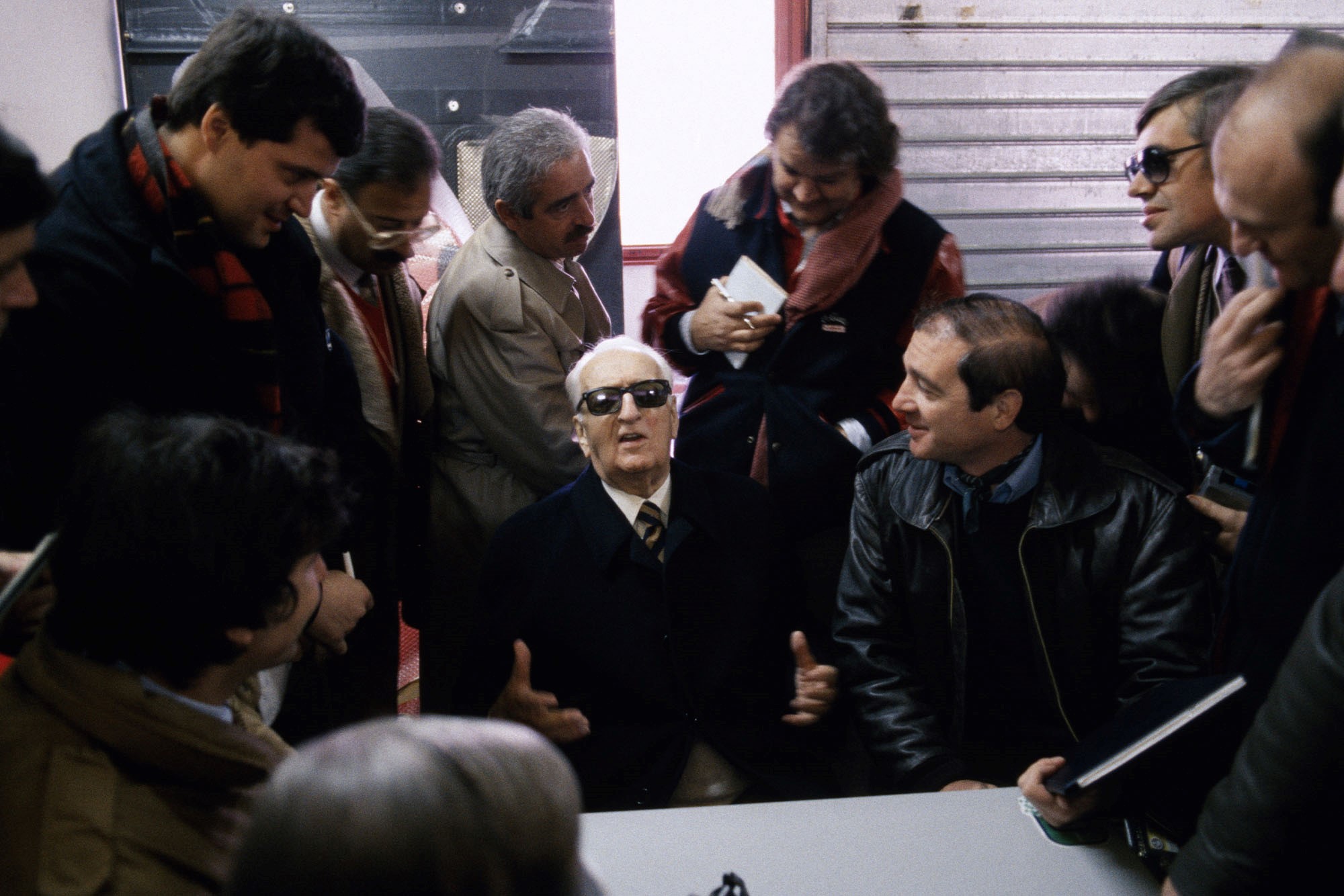
“L’Ingegnere” spreads the good word. Getty Images.
We’ve talked much about the Scuderia’s pilots as we consume our host’s chicken salad. It’s time to find out some secrets about the Old Man himself, about his vague wartime life, his unclear political affiliations, the firm’s opaque finances. Only Brenda isn’t playing. “There’s nothing to say; he never talked about himself, to anyone.” That may be entirely true, but at another point she relates “The Old Man said, ‘I took you because you are like the three monkeys: hear no evil, see no evil, speak no evil’.” You get the sense that if a rival team had tied her up and interrogated her for secrets, they’d have got nothing…
There are flashes of illumination: that Enzo liked opera but never took a holiday; that he dressed well in British clothes; that he watched the televised races from Fiorano with Sergio Scaglietti, his best friend; that he never talked about Dino, the loved son lost to muscular dystrophy in 1956 at the age of 24; that the perpetual dark glasses were no public affectation. “I don’t think he liked looking at people. He seemed to be embarrassed by it. I never saw him without sunglasses.”
She agrees that he saw the road cars as fund-raisers for racing, but continues: “he wanted to be driven in every new car. If a customer complained, he’d want to know why. He liked to be on top of everything.” He was no slouch himself, either: she relates a hair-raising drive with him in a 330GTC, adding “even when he didn’t drive any more he’d say to his chauffeur – quicker, quicker!”
But as is well known he had no “they just chopped them up. I’d see these bits of F1 and sports cars at the back of the factory and think ‘my God, they must be nuts’.”
On politics, Vernor’s take is this: “you never knew which party he followed. Some said he was socialist, others felt he was something else. You could never discuss it. I’m sure his voting depended on what he wanted and which way the wind was blowing.”
Yet this powerful man, one notch down from the Papacy in Italian eyes, was in touch with his employees. “He always tried to give jobs to local people and, when one got cancer, he paid for specialist treatment without anyone knowing”.
He wasn’t so affable with those in closer positions, nervous of his responses to anything less than success. “They used to tell him what they wanted to tell him,” says Brenda. “So after a while the Old Man decided he wanted a telex from each of them so he really knew what went on.”
But as he aged, more direct control passed to his subordinates; imported design skills supplanted home-grown; drivers negotiated harder. The old world of the autocrat was vanishing; the web’s threads still led to the centre, but fewer twitches disturbed that dimly-lit den. In 1982 the racing team moved out of the venerable old works to a modern facility at Fiorano circuit; it was also the year Gilles Villeneuve was killed.
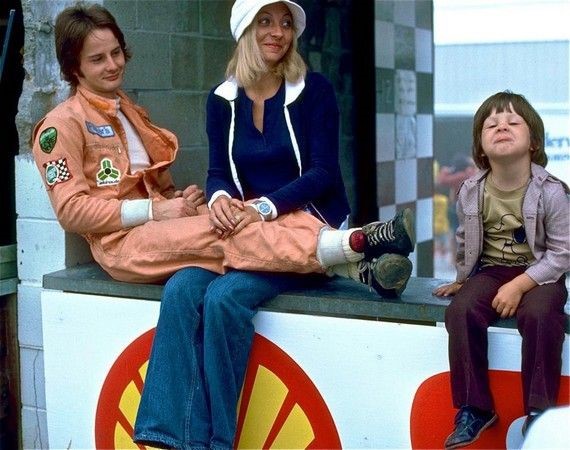
Gilles, Joann and Jacques.
“Gilles was like another son to him. People would say, ‘he breaks the cars all the bloody time,’ but The Old Man would never say a word against Gilles.” Yet he responded as expected to the terrible news. “Monday morning was Monday morning, as usual. He did take care of the family, though.”
While Modena remains her home, the factory is no longer her place. She’s cagey about the new regime after Enzo’s death, but the impression is that she felt the talents of Piero Lardi, Ferrari’s illegitimate son, were overlooked as Fiat increased its dominance, though he has stated in this magazine he did not want to head the firm and has proved a valued diplomat as vice-president.
“Piero had a difficult time with his Old Man. He was very hard on him. Piero is technically very skilled but was never allowed to show what he could do. It was Ferrari’s mother who said Piero must work in the business, the only woman the Old Man was frightened of. She used to ring him: “Enzo!” He’d say, ‘yes, mama!’ and stand to attention.”
Asked about Luca di Montezemolo, who in 1991 came from Fiat to become president of Ferrari, Vernor pauses – “you’re asking me embarrassing questions.” A phone call reminds her she has things to do, that pleasant though it’s been in this sunny London garden we’ve had our slot. We put our recorders away but not before catching her lament. “Ferrari is not the same. When I worked there we were small, we were a family. With the Old Man there were certain things you did and didn’t do. I wouldn’t last five minutes now. Montezemolo said to Piero ‘Brenda talks too much.’ I know the company has grown but I reckon the Old Man turns in his grave every day.”
Brenda Vernor first came to Modena in 1962. By Károly Méhes. April 19, 2014.
Here she met the English racing driver Mike Parkes who was driving for Ferrari. At this time she was teaching English in Italy. Piero Ferrari was one of her students. She became secretary to Enzo Ferrari doing his translations from English to Italian for the Ferrari F1 racing department.
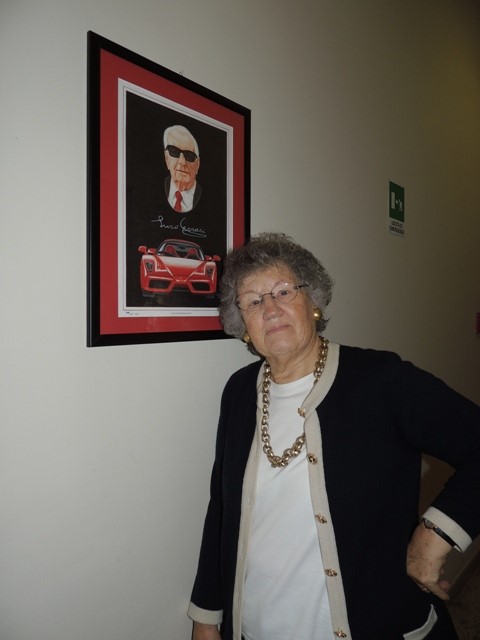
Photo by Károly Méhes.
In the summer of 1977 it was evident that Niki Lauda was about to leave. Did you know of the politics and consideration of Villeneuve as a driver for the factory?
“Ferrari has always been political, like many other big companies I believe, they were involved all the time. I don't really know, I don't think Niki was very happy at the time. The 'Old Man' had heard about Gilles, for whom he always had a soft spot. He liked drivers who had a lot of go. However I was never involved in these discussions, it was not part of my job. I was only a secretary”!
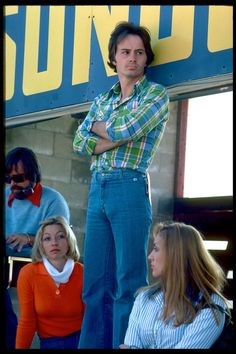
When did you first meet Gilles?
“When he first came to the factory. He was an introvert. He didn't like to talk too much, but with me this was not the case. He was like a younger brother for me. We had a very good friendship and we got on very well”.
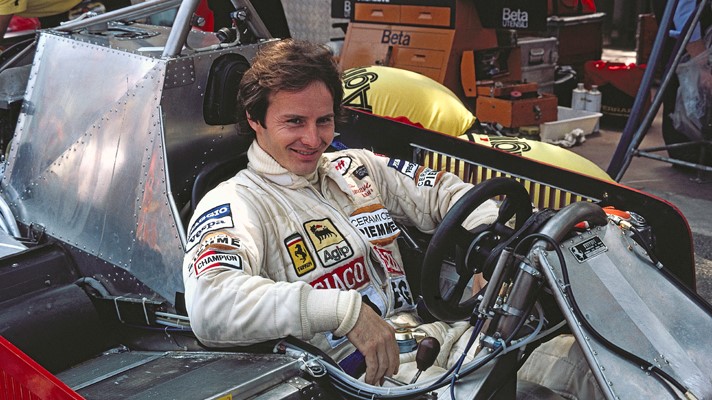
How was Gilles when he came to Maranello during his Ferrari years?
“For example everything in August is closed here in Maranello, even the hotels. He was here testing for a couple of days, so he asked me if I had a bed in my house to which I replied 'of course' so I gave up my bed for the night, but it was a privilege to have him at my home. I cooked dinner for him and after he went into the sitting room to study. At this time he was taking the exam for his helicopter's licence. He went to bed early and got up early the next morning, had a shower, a glass of water and off to Fiorano to begin testing again”.
How did you see Gilles’ teammate, Scheckter?
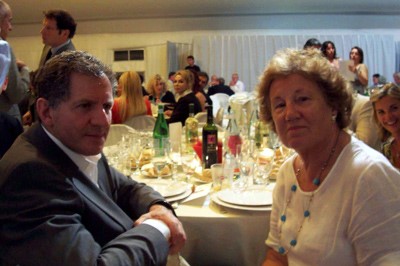
“Between Gilles and Jody there were never any problems. They were very good friends and discussed everything together. I think they were the best couple of drivers in Formula One that I have ever known. Jody was less of an introvert. He was always good fun. They laughed a lot together. However, Jody always told Gilles that he would never win a World Championship the way he drove, because it was not only winning races, but gaining points that counted. But Gilles was Gilles, give him four wheels and a steering wheel he would drive anything until it wouldn't go anymore! These two men were really special. They worked hard, but knew how to enjoy themselves. They use to come into my office and take out the tape from my typewriter, close all my drawers in my desk and throw the keys away or hide them somewhere. I had to call them at home in Montecarlo to find out where they had put them”!
Gilles and Maranello – was it a special relationship?
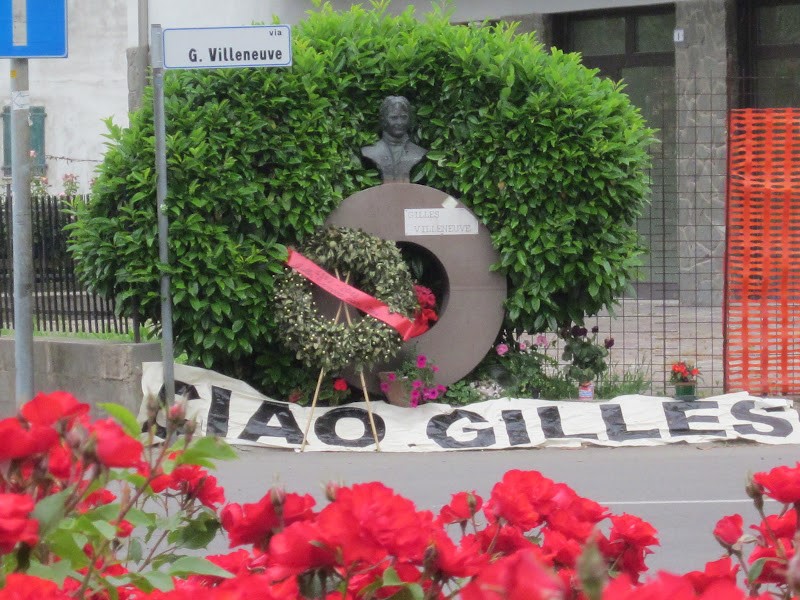
“Everyone loved Gilles. Everyone. When he died someone, a fan of course, wrote in the middle of the road outside the Ferrari factory 'Gilles forever, we love you'. If you go to the road which leads to Fiorano, a road which is named after him, you will find a monument to him. Every day someone places fresh flowers on it. I think he was one of the most loved drivers we ever had”.
Did you ever go to the races with the team?
“Sometimes. I went to the Canadian Grand Prix, the South African and Detroit. I also went to Imola. I loved Imola because it is an easy track to get in and out of, unlike Monza. On the other hand I was needed at home. Enzo Ferrari never went on holiday therefore could not understand why anyone else ever wanted to either. Once I went to Silverstone without asking him and he wasn't very happy about that... I never did this again. I never went somewhere without asking his permission”.
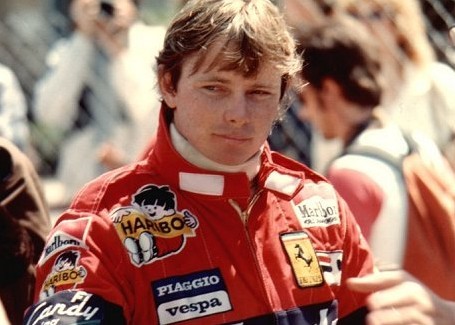
Didier Pironi.
After Jody came Pironi. What are your memories of him?
“I liked Pironi. I liked all my 'boys'. We called him 'Ciccio Bello' because he was well built and of course a handsome man. Everything was alright between Gilles and Didier before the race at Imola. I don't know what happened, what Didier thought, what they were thinking at the pit wall, but after that race it was finished between them. Everyone was upset in Maranello, but I have never known what really happened. They never discussed things like this with me. As I said, I was only a secretary! It was a pity because to see how they were before Imola and how they were after was very sad”.
Only thirteen days later came Zolder….
“Yes, I was wondering because Gilles was in a different state of mind at that time. We know the story that Didier went a couple of seconds faster than Gilles in practice and I think that Gilles was angry to think that Didier was in front of him and that is why he wanted to go out again and beat him. I don't know, but maybe they should not have let him out in his state of mind. I suppose it's destiny... everyone has a number and when it is your turn there is nothing you can do about it. It was the same when Michele Alboreto died. I heard the news from the TV. I couldn’t really believe that it had happened. I suppose one should not get too close to these people because one suffers even more. My only regret regarding Gilles is that I was not able to go to Canada to attend his funeral”.
It was the last big tragedy in the life of Enzo Ferrari. How did he take it?
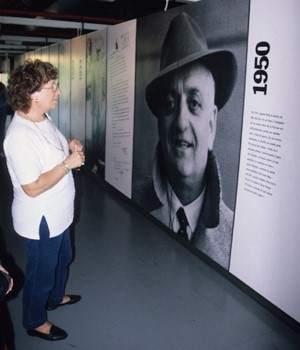
“I don't know. He never said anything. In the sense of fatal accidents he was very quiet. He continued on every day with racing. Even if one does not want to hear this, but when you lose someone dear to you, life has to continue, there is nothing you can do to bring these dear ones back”.
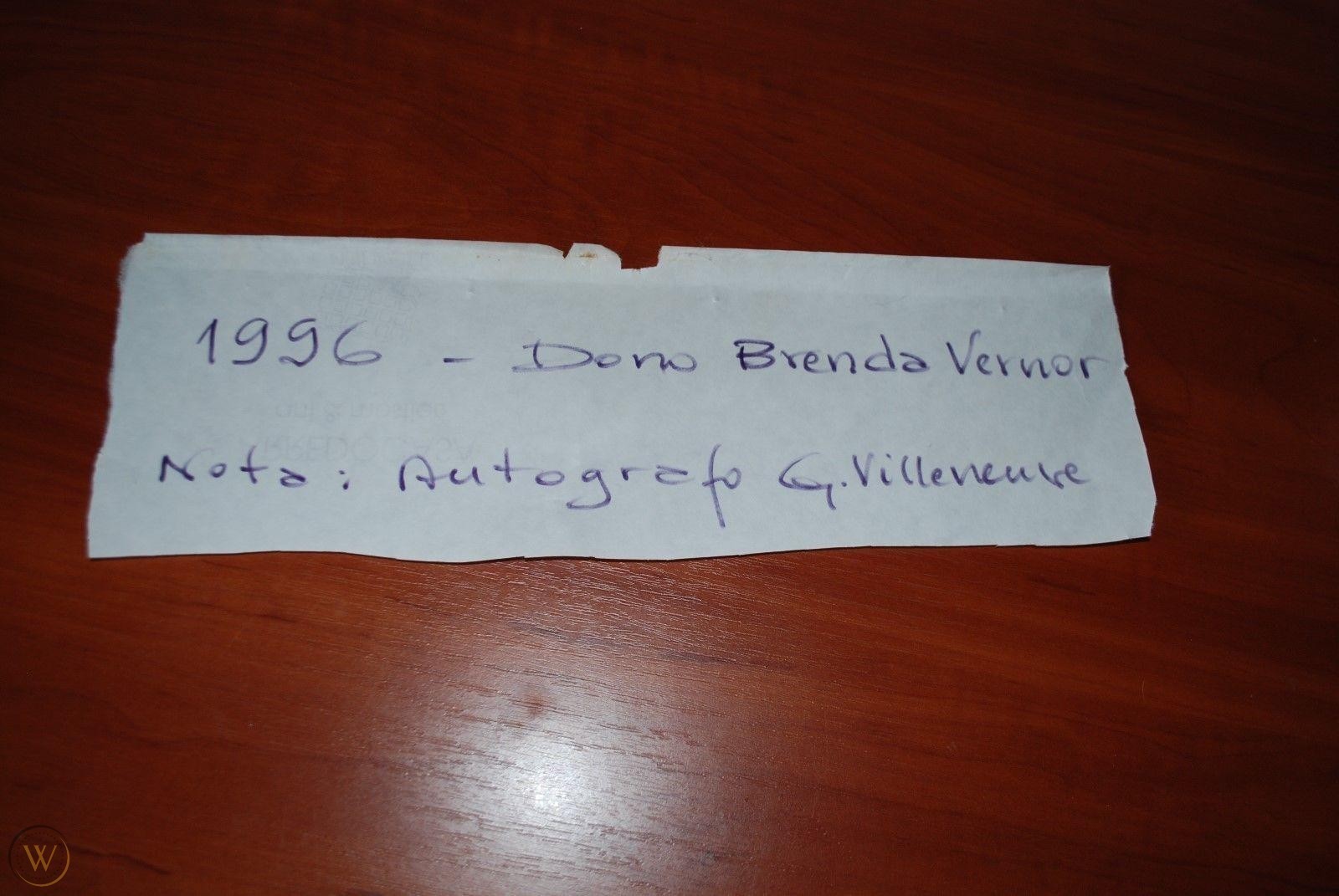
Do you have a special personal memory of Gilles?
“When the microwave oven first came out Gilles wanted me to have one. But unfortunately he died before he could give it to me. The firm who made them was a sponsor for Gilles. They sent me a microwave after his death. They said this was one of Gilles' last wishes. I still have the letter”.
If you look back to all the Ferrari drivers in the past 50 years you worked with Ferrari – how do you see Gilles amongst them?
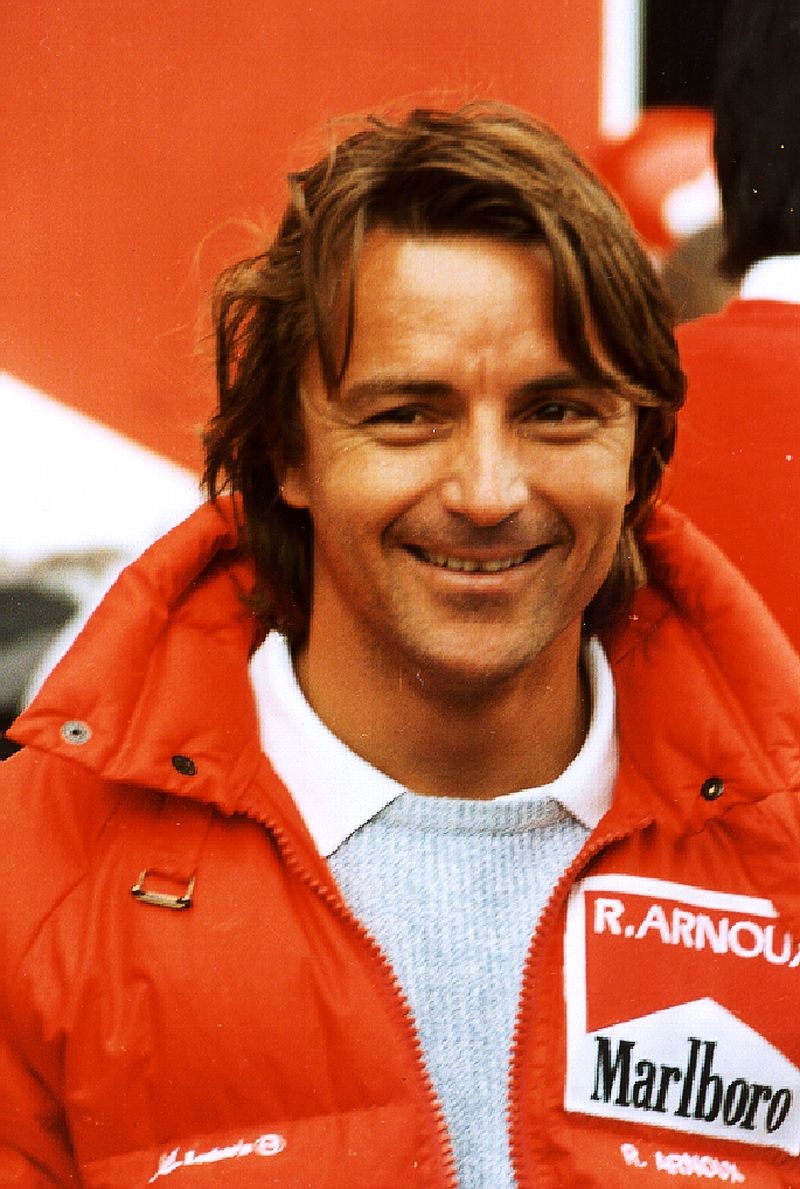
Rene' Arnoux.
“Oh, they are all my boys. I loved and still love them all. Maybe one is funnier than the other and maybe one is nicer than the other, but all in all they were all the same for me. I have experienced different opinions, when a driver is good and wins they are on top, when they lose, they are down. But not for me, if you are on top, you are on top. If you are down, then you are down. I don't care if they lose or win. They are the same persons to me. Fortunately I still have good contact with many of the drivers I took care of; Jody Scheckter; Stefan Johansson; Rene Arnoux; Patrick Tambay;
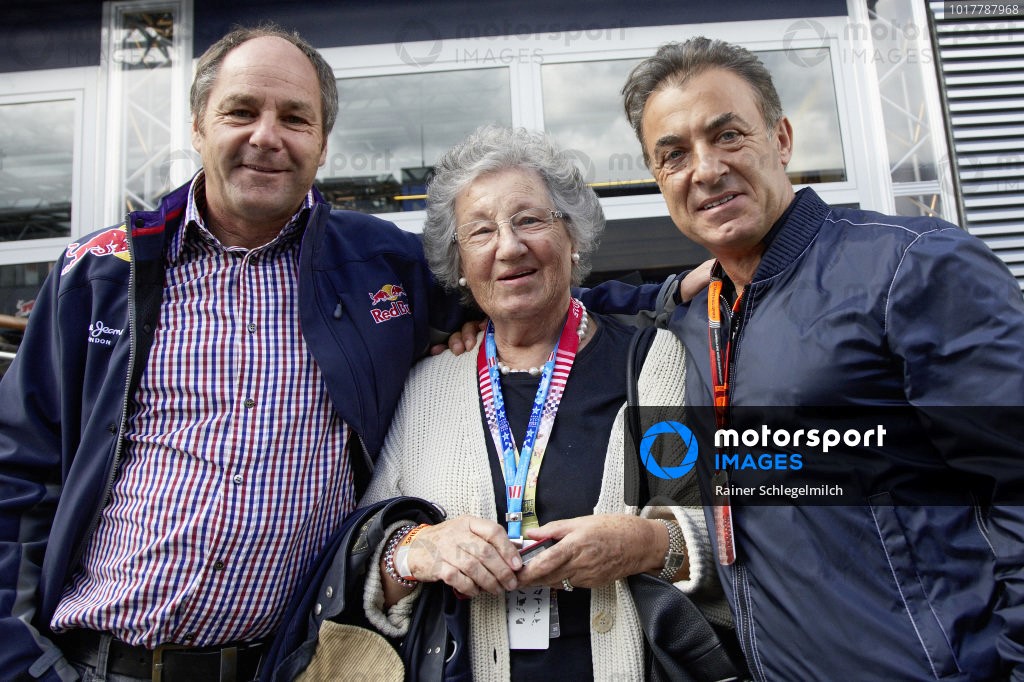
Austrian GP Gerhard Berger and Jean Alesi with Brenda Vernor. She worked for Enzo Ferrari from 1978 until his death in 1988, mainly to do his translations.
Gerhard Berger; and Jean Alesi. I was fortunate enough to be in the Racing Department of Ferrari at the right time.
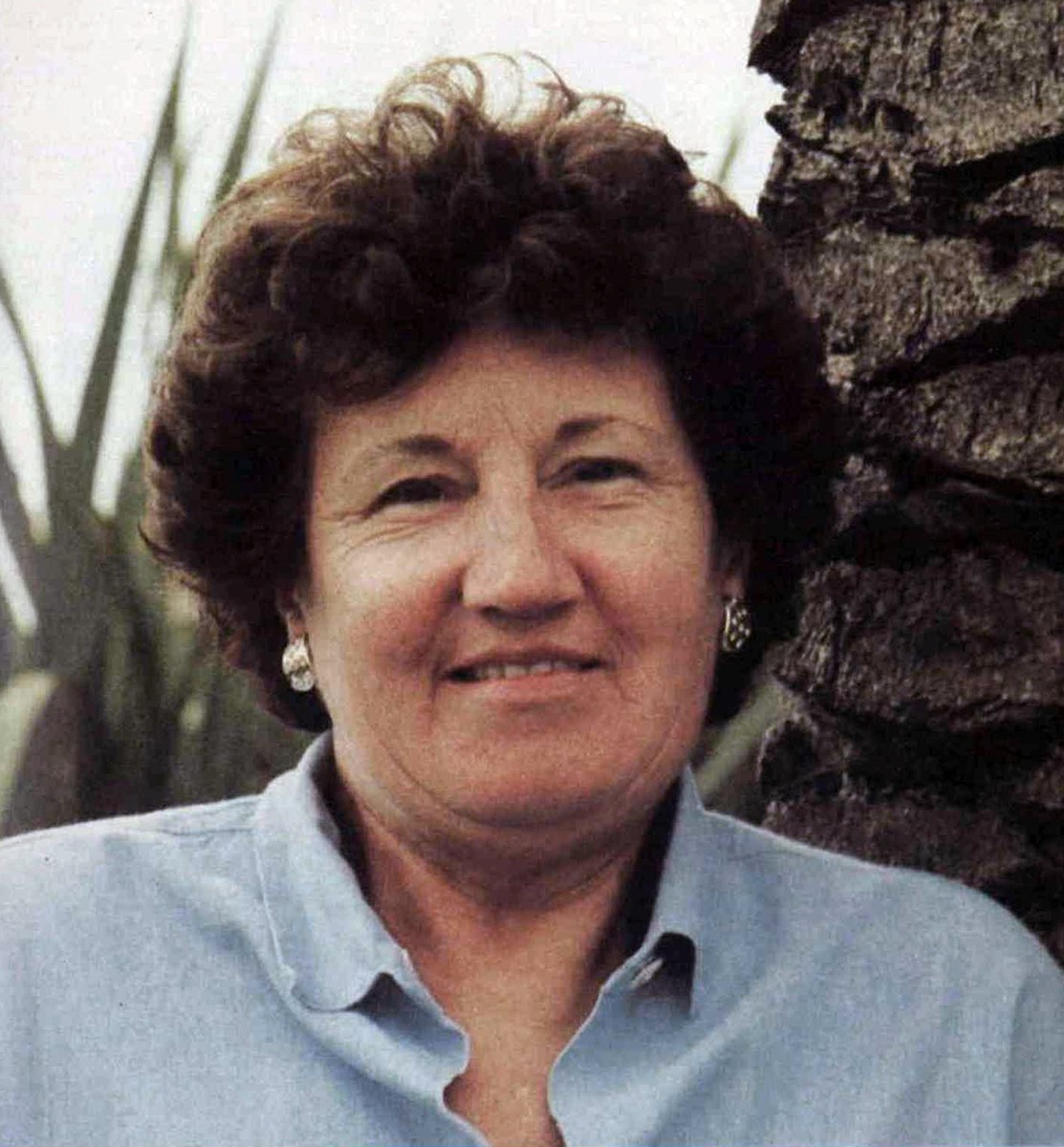
Maranello memories - Brenda Vernor recalls life at Ferrari. By James Foreman for Girlracer.
For as long as I can remember I’ve had a passion for all things automotive with a particular weakness for sports cars and motorsport.
I have no idea how or why this bug bit me so hard but it’s proven to be an incurable addiction.
Growing-up in Britain and a teenager by the early ‘80’s, my fix was temporarily satisfied by reading anything and everything I could find on these developing passions. Maybe it was the exotic cover photography or the wonderful penmanship of then editor Mel Nichols but CAR magazine was my particular Kryptonite.
A picture of the latest Italian exotica typically being driven at speed through Emilia Romagna and teased on the cover at my local newsagents was always more than I could resist. Quality time in my bedroom then followed with the radio on as I eagerly devoured every word and picture of the latest Ferrari road car or Grand Prix race report.
Back then, well known editors or road test journalists arriving at Maranello to drive a 308, 400 or Boxer were sometimes offered the rare opportunity to greet Mr. Ferrari personally. Many a hardened journo described the long, anxious wait to meet the legendary “Il Commendatore” as an experience akin to meeting the Pope or an unexpected summons to the headmaster’s office at school.
Typically said journo would be ushered into Ferrari’s dimly lit office with him sat behind his desk, dark sunglasses on and flanked by an aide who would translate the conversation from English to Italian or vice versa. If the journo was someone that Mr. Ferrari had met before or appeared to like, the “old man” might ask the aide to go and bring a copy of his memoires that he would personally sign with his trademark purple inked pen and give to the journo as a gift. Fabulous stuff!
It was stories like this that captured my imagination and oftentimes reading reports from Maranello familiar names would often crop-up, none more so than Brenda Vernor. A fellow Briton, Vernor moved to Maranello in the early 1960’s and for many years was Enzo Ferrari’s personal assistant.
Short of being a driver for the famous Scuderia or a factory test driver for the road car division, I figured that Brenda must have had the best job in the world. Not only did she get to work closely with the legend that was Enzo Ferrari, she would also meet many famous people and dignitaries that visited the factory. On the racing side, Brenda got to know well many of the drivers such as the late great Gilles Villeneuve, Jody Scheckter, etc.
Purely by chance, I recently found myself with the opportunity to connect with Brenda and was delighted when she accepted my invitation for a Q&A interview. Several informal chats followed and I was relieved to find that she was exactly as I imagined she would be, charming, amusing, direct to the point and quick to set me straight on any incorrect assumptions I had formed.
You can imagine that Brenda has given many interviews over the years so I am extremely grateful to her for her time and consent. Honestly, there were so many questions that I could have asked Brenda about her life and time at Maranello that what follows naturally represents a mere snapshot of the life and career of a remarkable woman, enjoy!
James: when you first moved from England to Italy, obviously a different culture and language to understand and come to terms with, how difficult did you find the transition and how long did it take for you to feel at home there?
Brenda: “when I first went to Italy in 1962 I found it quite difficult and of course not knowing the language even more so. The Italian mentality was so different in those days that it was difficult for me to adapt easily. For a young person arriving today they would find things much easier because the mentality of Italians is more open than in those days.”
I stuck it out probably because I have 3 older brothers and when I informed my parents that I was leaving to go and live in Italy they all replied “let her go she will be back in a month." Being a Lion and half Irish (my father was Irish) I was determined that I would not give them the satisfaction of saying “we told you so!”
James: were there many other English speaking people within the local community or at Ferrari at that time?
Brenda: ”at that time there were not an awful lot of English or foreign people for that matter living in Modena and when I joined Ferrari in the racing department I was the only woman and the only English person there.
James: at any point did you ever consider moving back to England or was it the case that once you had settled in Italy this was now home?
Brenda: “I have never had the inclination to return to the U.K. firstly because of the weather and of course the good food, but also over the years I have lost all contact with my school friends and what would I do there? Here in Maranello I have lived for so many years I call this my home now and of course know so many people and all the visitors who come here for Ferrari are the ones who I met during my days at Ferrari.
James: when Enzo Ferrari asked you to work for him, was this a daunting prospect in any way or an easy offer to accept?
Brenda: ”I remember the day the 'old man' called me on the telephone. I had just taken my Labrador dog out for his walk and he had made my angry.
As I walked into the hallway the phone rang and I picked it up shouting down the phone "pronto." I heard a voice at the other end saying "are you angry?" to which I replied certainly not and the voice then said "this is Enzo Ferrari" what about coming to work for me? I stopped breathing for a moment and replied that I didn't really know, to which he told me to come to the Pista of Fiorano the next day to speak with him and that was that! I had a 3 months trial and then after that was taken on as his English interpreter as he never spoke this language only French.
James: how did your role at Ferrari evolve or change during your time there?
Brenda: “I used to send all the telexes in English to all the Formula One teams and when there was a meeting in Modena went to interpret for him. it was great fun meeting all the famous managers of all the F1 teams.
They used to sit me next to Ken Tyrell, who I loved, because nobody else wanted to, why I still don't know! I did letters etc and translated the telexes which came back from Bernie (Ecclestone) or the other teams, anything that was in English was my job.
James: there has been so much written over the years about Enzo Ferrari both fact and myth. Obviously he served many roles, industrialist and public figure, husband, father and employer. How would you describe him in these roles?
Brenda: ”the 'old man' had a wonderful sense of humour and he loved to tease people, many times with me, his work was his life and this was the most important thing for him. He loved his wife very much, in his own way of course, he wasn't a person to demonstrate his feelings.
When he was angry he would go red in the face but it would only last for about 10-15 minutes and then it was all over as if nothing had ever happened, however it was always best not to reply or interrupt him whilst he was talking!
James: how did Mr. Ferrari view the road car side of the company compared to the racing side? Was this an equal passion or were the road cars seen mostly as a way to fund the racing activities?
Brenda: ”of course his life was the racing department but he was also interested in the road cars which of course he sold to pay for the racing.
However when he received a client he always asked them the good things and the bad things about the car they had bought and wrote down all the details in his diary after which he would call in the engineer and tell him the defects of the car and the good things so it was put right.
James: Mr. Ferrari built some of the most successful and desirable cars ever to grace the road and track, were there any particular road or racing models that he was especially fond of that you recall?
Brenda: “I can't really answer this question, I only know that he used to drive a 330GTC, which I rode in with him and what a driver, my hair was standing on end when I got out of the car.
He was of course interested in other foreign road cars, in fact he drove a Renault which he was given to try out and was impressed by the beautiful nappa leather seats and I believe it was the first car where there was the voice which told you that your seat belt was not fastened etc and which he thought was impressive.
James: as I mentioned earlier, there has been many myths and inaccuracies written about Mr. Ferrari over the years so it would be great if you would be able to set the record straight on a couple of topics. Luigi Chinetti was an important business associate of Mr. Ferrari’s, how would you describe their relationship both from a business and personal standpoint?
Brenda: “I think Luigi Chinetti was a real friend and they both got on together very well also from a business point of view, they were very much alike in their thinking this is probably why the 'old man' never had an argument, as far as I know, with Luigi.
James: in the mid 1960’s Ford tried to take over Ferrari, at the time, was Mr. Ferrari openly looking to sell part or all of the company for any reason or did Ford simply make this offer out of the blue so to speak?
Brenda: ”in the 1960's Ferrari did think of selling part of the company because he needed the money but when he found out that Ford wanted to run the racing department he refused to sell.
James: Gilles Villeneuve was my first racing hero and still someone I miss greatly to this day. He was without doubt one of the fastest and most committed drivers ever to compete in Grand Prix racing. It would appear that Gilles and Mr. Ferrari had a close relationship, almost a father and son type of relationship. Was this correct, how would you describe their relationship?
Brenda: “not only you miss Gilles but he was like a younger brother to me. Ferrari loved him because he was quick and you never slept whilst Gilles was around and the 'old man' loved drivers like this.
James: it was suggested that in 1982 and before his tragic passing at the Belgian Grand Prix that Gilles was negotiating with McLaren to return to the team where he made his Grand Prix debut. Did he ever express his feelings to you on this matter and do you believe that he was seriously considering leaving Ferrari at that time?
Brenda: ”Gilles never spoke to me about this, however I do know that after the 1980 F1 season with the 312 T5 he was fed up because the car was a disaster, so maybe he did have this thought in his mind?
James: Ayrton Senna quickly made a name for himself in Formula One, what did Mr. Ferrari think of the Brazilian and did he ever try to bring him to Maranello?
Brenda: “I loved Senna he was such a gentleman and when I met him for the first time when he came with (Gerhard) Berger to my office in Maranello, he confirmed what I thought, he was a gentleman as well as a very good driver. As for coming to Ferrari there was probably some talk about it but I cannot confirm as this was the job of Dr. Piccinini, he would be the only one to know.
James: do you follow Formula One today, if so, what are your thoughts on the sport at present, the Scuderia, Fernando Alonso and Felipe Massa?
Brenda: “I used to tape every single Formula One race but unfortunately I don't do that now because I find them quite boring.
It is a pity to say this but I find it true. I always watch the start and if I am lucky I wake up for the finish, only of course if there is something exciting going on I stay awake, however I think the problem of the tyres, medium, hard, soft etc is really a pain in the .... and in my time I was able to sit at the pit wall which you can't do now and even if you want to walk the pit lane after practice you have to line up ...... it's not for me as I don't have a lot of patience for this kind of thing, especially as in our days it was so much different ... I suppose this is progress, who knows!
Alonso is a quick driver and very good at the start, like most of the drivers he makes mistakes sometimes but all in all he is good and let's hope he will bring home the points for a Championship.
James: are you still involved or in touch with Ferrari in any way these days?
Brenda: ”no I don't go to Ferrari anymore, my time is over, I am just one of the past!
James: finally, looking back at your time at Ferrari, how would you describe it and if you could go back and do anything differently, what would you do?
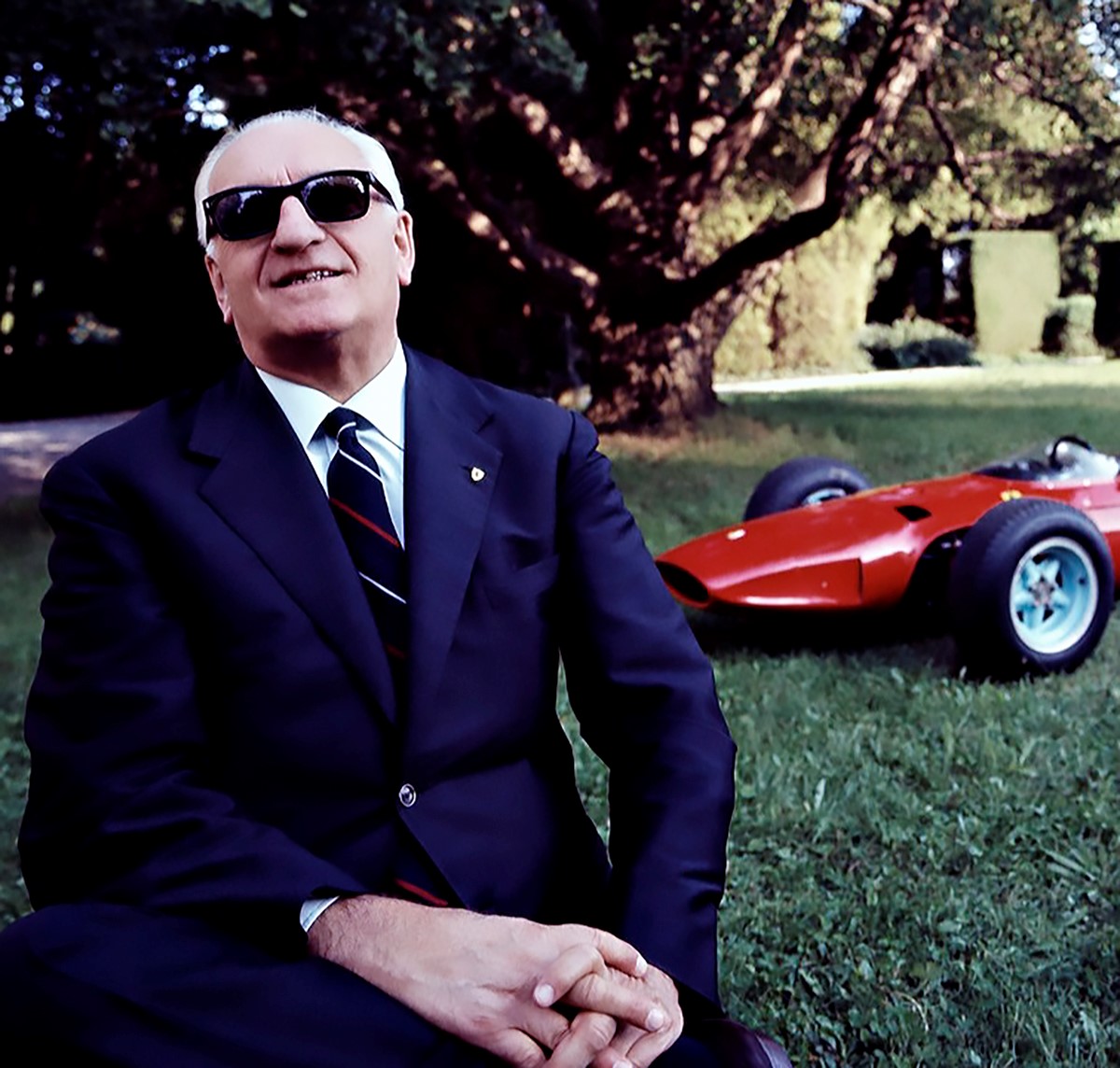
Brenda: “I think myself very lucky and privileged to have worked for such a famous and wonderful man and to have been part of the ups and downs of the Ferrari racing department. At first being the only Briton and woman to work there with 199 men, I had a whale of a time.
We worked very hard but always had time for a joke and laugh. I remember many times I used to go down to the racing department around 9 p.m. and take cakes which I had baked for the mechanics and a few bottles of Lambrusco and sit with them whilst they prepared the F1 cars until they had finished, sometimes 2 or 3 in the morning.
You could not do that today. However I still have a very good relationship with all the mechanics and all the F1 drivers that passed my hands. I use to wash their overalls, pack and unpack their racing bags, find them flats or book their hotels, do their fan mail etc., etc. and it wasn't part of my job I did it on my own account, but it was fun and they always thanked me in their own way.
In those days I wouldn't have changed anything, today I don't know, however I think with my character I wouldn't last a day in Ferrari, it has changed so much, but we are now in 2000’s so what can you expect, it is just difficult for one to accept.
James: Brenda thank you so much for taking the time to speak with Girlracer, it has been a personal highlight for me to be able to connect with you and hear about your remarkable career and life in Italy!
Brenda: ”thank you for asking me to be part of Girlracer. It has been a pleasure to answer your questions and I hope that your readers will enjoy the ups and downs of life in Maranello!
Videos



Comments
Authorize to comment